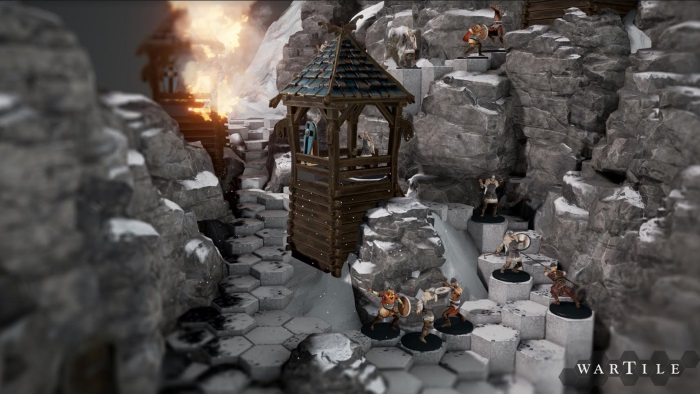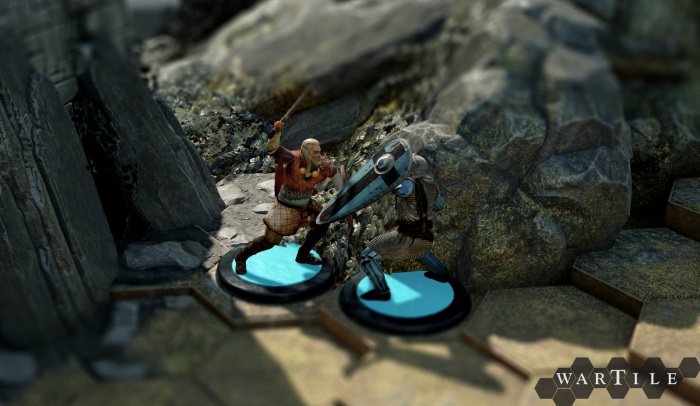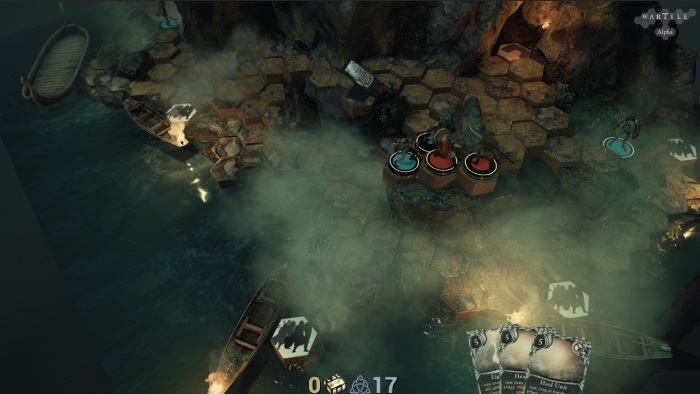In the Spring of 2016, Playwood Projects brought their highly polished, tabletop inspired RTS to Kickstarter. Lead by Founder/Creative Director, Michael Rud Jakobsen, The team hoped to raise £55,000 to develop Wartile for PC and MAC. Despite a strong start and a small, but supportive community, the campaign was lagging behind its goal. With 8 days remaining, Jakobsen made the “hard and regretful decision” to cancel the campaign entirely to pursue other options.
With Wartile preparing for its March 17th Steam Early Access release, I checked in on how the project has progressed. Jakobsen confirmed that without a budget, holding things together hasn’t been easy.
“A Kickstarter campaign is incredibly hard and unpredictable, with numerous factors in play, where you can influence some, but not all. During the campaign, we had great coverage and the press and YouTube streamers were all generally really excited about Wartile. According to Kicktrack, we were also ranging in the top among computer games during the whole campaign, however it was still not enough,” Jakobsen explained.
Building A New Strategy
Following the campaign, Playwood was able to secure a small developer grant from EPIC. This allowed them to remain afloat, but just barely. With close to no budget, the developer attempted to negotiate with publishers and investors to find a partner. Failing that, their plan was to go ahead and release Wartile on early access in its current state. Not only did the team worry this release would be premature, they didn’t have any marketing budget to follow it. This made early access a particularly risky option.
Four days before having to announce the early access launch, Playwood met with Jacob Honore, founder of Danish Studio, Zaxis. With Honore’s help, Playwood was able to postpone early access until Q1 2017. This would give the team more time to polish Wartile while preparing a strong PR and marketing initiative. The funding also enabled them to apply for and receive an almost $95,000 grant from the Danish Film Institute. “Today we have a healthy but limited budget to continue our development, even being able to increase our talented team size a bit,” Jakobsen said.
Focusing On Features
The larger team has helped Playwood prepare for the upcoming launch. “Since September we have been running a closed alpha on steam, inviting players from our community. With that feedback, we have been able to polish the game and adjust features and communication for a better user experience,” Jakobsen said. The early access build will include the majority of key features promised in the Kickstarter as well as new playable content such as single player & muliplayer (co-op) battle boards.
“The majority of our players feel that the game is really polished and smooth, and mostly ask for deeper combat choices and improved navigation systems, this is something we are looking to improve and it’s something that will be better step by step. Other areas are, in general, more playable content and more customization and collectibles,” Jakobsen said. The team’s current projects include; waypoints, added combat depth, a shop on the campaign board, and the ability to unlock more challenging encounters/enemies.
Its an amazing outcome from what could have spelled disaster for such a small developer. Jakobsen credits the Wartile community for helping the project progress so much. “Our community is very important for us today, we know that Wartile is not a game we develop for them, but together with them,” he said.
Utilizing feedback from the community Jakobsen was able to zero in on some of the issues with his initial Kickstarter. He believes that the number of pledge levels may have been a factor, noting, “the content and price of these was badly communicated.” The inclusion of lower priced tier levels may have also backfired unexpectedly. Intended to add more, low-risk support options, feedback suggested they actually devalued the project in the eyes of seasoned backers.
Looking Back While Working Forward
Jakobsen said that if he was to do the campaign over those were the biggest changes he’d make. In addition he would “Set as low a pledge goal as possible, make as few and simple pledge options as possible and keep most of the rewards digital.” He also suggested having additional art assets (“more than is needed to make the game”) on hand so backers and dig deeper into the project’s story and lore.
Overall, Jakobsen’s biggest suggestion to developers who are looking for funding is to investigate as many options as possible. “Think twice about running a crowdfunding campaign, its hard work for many months, not just the month of the Kickstarter,” he said.
“The Kickstarter is great for building a strong and dedicated community, but don’t run the campaign before you already have that. Realize that while preparing, running, and administrating the post Kickstarter, you won’t be able to develop much on the actual game. For most projects the possible pledge goals have to be set so low, that it won’t really cover much of the production costs, so consider as most already do, to run a Kickstarter also partly as a PR campaign where you build interest around the projects last development cycle. This will also help you to launch a Kickstarter with a product that has a high degree of polish.”
Wartile launches on Steam Early Access on March 17th. Jakobsen said the plan is to continue developing in early access for around half a year. The team is considering support for PlayStation and Xbox versions closer to the final release around Q3 2017. They are also considering the possibility of tablet support after full release.








